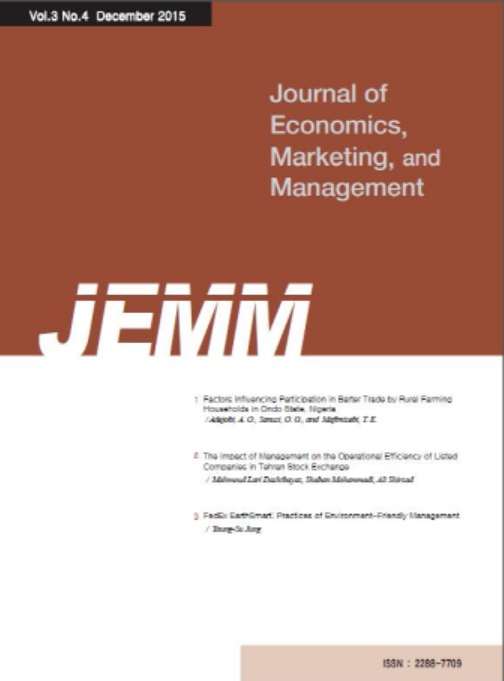9권 3호
초록
Abstract
Purpose: This study investigates causal relationships among brand experience, perceived value and brand support behavior in both Chinese and Korean consumers, and also examines the moderating effects of interaction with customers in the relationships between brand experience and perceived value. Research design, data and methodology: Three research were presented and examined empirically in this study. First research question is about relationships among brand experience, perceived value and brand support behavior. Second is about the moderating role of interaction with customers and third is about the differences in the causal relationships between China consumers and Korean consumers. A total of 377 samples who had visited theme parks in China and Korea were surveyed. Results: Sensory experience, emotional experience, and cognitive experience have significant causal relationships with perceived value in Both Chinese and Korean consumers. Perceived value has a positive effect on brand support behavior and interaction with customer has a moderating effect between brand experience variables and perceived value in Both Chinese and Korean consumers. Second, the causal relationship between behavioral experience and perceived value is not significant in Both Chinese and Korean consumers. Third, there were significant differences in the effects of emotional experience and cognitive experience on perceived value between Chinese consumers and Korean consumers. Conclusions: Managers of theme park industry should design experience programs considering various brand experience variables for both Chines consumers and Korean consumers. Second, it is necessary to raise the level of customer interaction between employees and customers.
초록
Abstract
Purpose: The purpose of this study is to understand the status quo of production efficiency in private industrial enterprises above designated scale in China's 31 provinces (including municipalities directly under the central government, autonomous regions) (hereinafter referred to as China's 31 provinces). Research design, data and methodology: Find out the factors affecting the development of production efficiency in private industrial enterprises, using DEA, Data Envelopment Analysis and Malmquist index analysis, build the evaluation model of production efficiency in private industrial enterprises, and analyze the data of China's 31 provinces private industrial enterprises in 2015-2019. Results: The research results show that the production efficiency of private industrial enterprises in China is improving on the whole. Although the total factor productivity has decreased slightly, the overall efficiency and pure technical efficiency have increased significantly. Conclusions: The conclusion of this study can provide reference for Chinese private industrial enterprises to improve production efficiency and make development plan. The limitation of this paper lies in the fact that the private industrial enterprises in inefficient provinces have not been given specific improvement plans.














